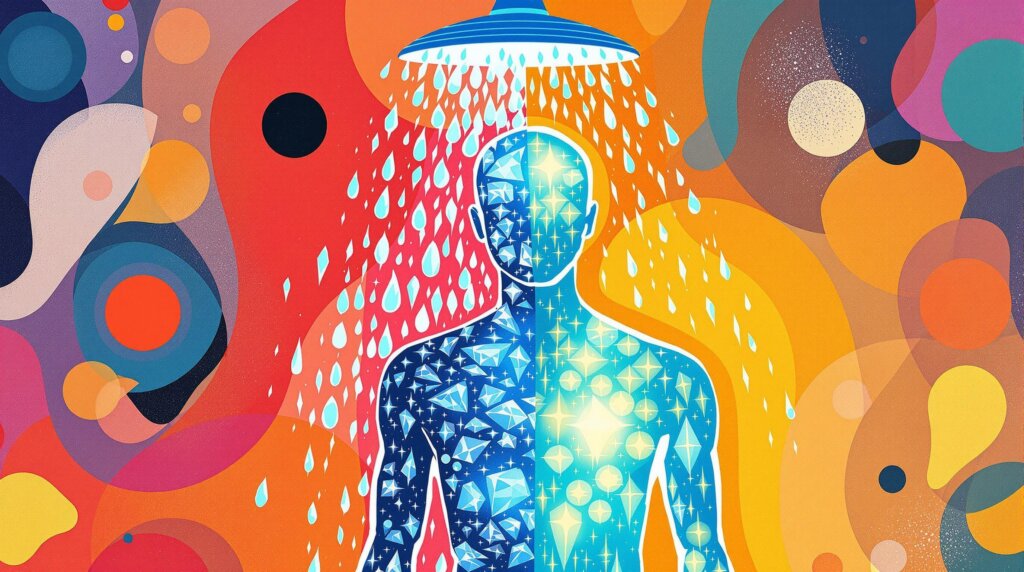Understanding Temperature Extremes and Their Impact on Longevity
The Science of Temperature Stress and Human Health
Cold showers and saunas might seem like torture to some, but they’re rapidly emerging as powerful tools in the quest for a longer, healthier life. Scientists have discovered that exposing our bodies to temperature extremes triggers remarkable biological responses that can boost our health and potentially extend our lifespan. It’s a bit like giving your body a workout – except instead of lifting weights, you’re challenging your system with heat and cold.
The Biology Behind Temperature Adaptation
Our bodies are incredible adaptation machines. When exposed to extreme temperatures, they activate stress response pathways that strengthen our cellular defenses. This process, called hormesis, is similar to how exercise makes us stronger – a controlled amount of stress leads to positive adaptations. Research shows that regular exposure to temperature extremes can improve cardiovascular health, reduce inflammation, and enhance cellular repair mechanisms.
Historical Context and Modern Research
Traditional cultures have used temperature extremes for centuries – from Nordic ice baths to Native American sweat lodges. Modern science is now validating these practices. Studies on Finnish sauna users show significantly lower rates of cardiovascular disease and longer lifespans. Cold exposure enthusiasts like Wim Hof have sparked research revealing remarkable benefits of controlled cold exposure on immune function and stress resistance.
Common Misconceptions
Many people think extreme temperatures are dangerous or only for athletes. While caution is necessary, research shows that gradual adaptation makes these practices safe for most healthy adults. Another myth is that longer exposure equals better results. Actually, short, consistent sessions often provide optimal benefits without unnecessary stress on the body.
Key Research Findings
The numbers are compelling. Regular sauna users show a 40% lower risk of cardiovascular death. Cold exposure can increase metabolic rate by up to 350%, boost immune function by 200-300%, and reduce inflammation markers significantly. Studies indicate that combining both hot and cold exposure might offer synergistic benefits for longevity.

The Benefits of Cold Exposure for Longevity
Cold Showers and Cellular Health
Cold exposure activates brown fat, a specialized tissue that burns energy to produce heat. This activation improves metabolic health and might help prevent age-related decline. Cold showers also trigger the release of norepinephrine, a neurotransmitter that improves focus, mood, and cellular repair processes.
Immune System Enhancement
Regular cold exposure trains your immune system like a muscle. Research shows increased production of white blood cells and anti-inflammatory compounds. This enhanced immune function helps fight age-related diseases and might slow the aging process itself.
Sauna Benefits and Longevity Mechanisms
Heat Shock Proteins and Cellular Protection
Sauna sessions trigger the production of heat shock proteins, molecular chaperones that protect and repair cellular components. These proteins help prevent protein aggregation, a common feature of aging and neurodegenerative diseases. The heat stress also activates autophagy, our cellular cleaning system that removes damaged components.
Cardiovascular Improvements
Regular sauna use improves heart health by increasing blood flow, reducing blood pressure, and strengthening blood vessel function. The heat stress simulates moderate exercise, providing cardiovascular benefits similar to a light workout. Studies show that frequent sauna users have significantly lower rates of heart disease and stroke.
Mental Health and Cognitive Benefits
Both cold exposure and sauna use increase the production of brain-derived neurotrophic factor (BDNF), a protein crucial for brain health and cognitive function. This might explain why regular users report better mood, clearer thinking, and reduced anxiety.
Implementing Temperature Extremes Safely
Starting a Cold Exposure Practice
Beginning with cold showers requires gradual adaptation. Start with 30 seconds of cool water at the end of your normal shower, gradually increasing duration and decreasing temperature. Focus on controlled breathing and maintaining calm during exposure. This builds both physical and mental resilience.
Safe Sauna Protocol
Start with shorter sessions (5-10 minutes) at lower temperatures, working up to longer sessions as your body adapts. Stay hydrated and listen to your body’s signals. The optimal frequency appears to be 3-4 sessions per week, with temperatures between 80-100°C (176-212°F).
Practical Guidelines for Temperature Training
- Start gradually and build tolerance over time
- Stay well-hydrated before and after sessions
- Monitor your body’s response and adjust accordingly
- Maintain consistent breathing during cold exposure
- Don’t exceed 20 minutes in the sauna per session
- Cool down properly after heat exposure
- Consider your individual health conditions
- Combine with other healthy lifestyle practices
- Track your progress and benefits
- Consult healthcare providers if you have underlying conditions
Combining Heat and Cold for Maximum Benefits
The practice of alternating between hot and cold exposure, known as contrast therapy, might offer enhanced benefits. Start with heat exposure followed by cold, repeating the cycle 2-3 times. This pattern improves circulation, reduces inflammation, and strengthens stress resistance more effectively than either modality alone.
Advanced Temperature Training Techniques
Optimizing Timing and Frequency
Research suggests that morning cold exposure might offer additional benefits by aligning with our natural cortisol rhythm. For saunas, evening sessions might improve sleep quality by raising and then lowering core body temperature. The key is finding a sustainable routine that fits your lifestyle.
Measuring Progress and Results
Track objective markers like heart rate variability, recovery time, and subjective measures like mood and energy levels. Some enthusiasts use blood markers of inflammation or stress hormones to gauge their adaptation. Regular monitoring helps optimize your protocol for maximum benefits.
The Future of Temperature Training
Emerging Research and Technologies
Scientists are investigating the molecular mechanisms behind temperature adaptation and longevity. New technologies for precise temperature control and monitoring are making these practices more accessible and measurable. Research into the timing of exposure and combination with other longevity interventions shows promise.
Personalized Protocols
Genetic testing might soon help determine individual optimal temperature exposure patterns. Variables like age, fitness level, and health status could inform customized protocols for maximum benefit with minimum risk.
Temperature training through cold showers and sauna use represents a powerful tool for improving health and potentially extending lifespan. The key is starting gradually, maintaining consistency, and listening to your body’s responses. By incorporating these practices into your routine, you can harness the longevity benefits of temperature stress while building physical and mental resilience. Remember that these techniques work best as part of a comprehensive approach to health, including proper nutrition, exercise, and stress management.



